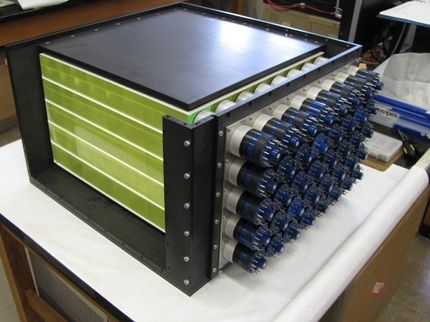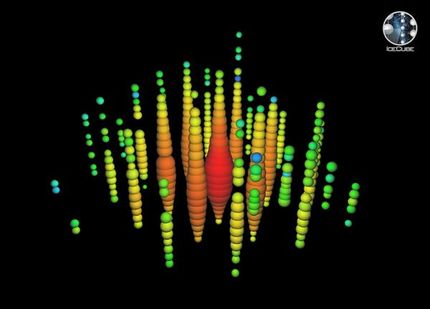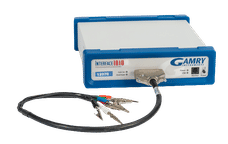Best precision yet for neutrino measurements at Daya Bay
In the Daya Bay region of China a research project is underway to study neutrinos. The international Daya Bay Collaboration announced new findings on the measurements of neutrinos, paving the way forward for further neutrino research, and confirming that the Daya Bay neutrino experiment continues to be one to watch.
The latest findings involve measurements that track the way neutrinos change types or flavors as they move, a characteristic called neutrino oscillation. By measuring neutrino oscillation, the researchers can home in on two key neutrino properties: their "mixing angle" and "mass splitting."
"We are trying to measure a small effect to a very high precision. Our new result is an important milestone marking the start of the precision era of neutrino physics," said physicist Xin Qian of the U.S. Department of Energy's Brookhaven National Laboratory, which plays multiple roles in this international project, ranging from management to detector engineering and data analysis. The Collaboration includes more than 200 scientists from seven regions and countries.
It's important to measure the mixing angle and mass splitting parameters as precisely as possible, the scientists say, because neutrino behavior could hold the key to understanding the asymmetry between matter and antimatter in the universe. This asymmetry, known as the charge-parity or CP violation, explains why shortly after the Big Bang, when most matter and antimatter annihilated each other, some matter was left over to make up the universe we see today.
The Fluctuating Neutrino
The behavior of neutrinos is unlike any other fundamental particle--they seem to disappear, reappear, and transform themselves as they travel, unimpeded, from sources like the sun and other stars, through space, planets, and even our own bodies.
Neutrinos come in three flavors - electron, muon, and tau. And as a neutrino travels, thanks to quantum mechanical fluctuations, it oscillates between flavors. That is, a particle that starts out as an electron neutrino might at some point turn into a tau neutrino. Then at another point it will present itself more like it did in the beginning. As time goes by, these transformations happen again and again, with the oscillation having a particular amplitude and frequency--similar to sound and light waves.
The amplitude of neutrino oscillations gives scientists information about the rate at which neutrinos transform into different flavors, known as the mixing angle. The frequency of the oscillations gives information about the difference between the masses, a property known as mass splitting.
The Neutrino Net
To study neutrino oscillations, the Daya Bay Collaboration has immersed eight detectors in three large underground pools of water. These detectors sit at different distances from the six China General Nuclear Power Group reactors in Daya Bay. As a by-product of generating electricity, the reactors emit steady streams of electron antineutrinos, which for purposes of the experiment are essentially the same as electron neutrinos. The detectors pick up the transformations that occur as these millions of quadrillions of electron antineutrinos travel farther away from their origin in the reactors.
Based on the data collected over 217 days with six of the Daya Bay detectors and 404 days using all eight of the Daya Bay detectors, the research team has determined the value for a specific mixing angle, called theta13 (pronounced theta-one-three), to a precision two times better than previous results. Similar improvement was made in the precision of measuring the mass splitting.
"We've been able to collect so much data and achieved this level of precision thanks to the spectacular performance of our detectors," said physicist Chao Zhang of Brookhaven Lab. The measurements support the three-neutrino model, which describes physicists' current understanding of the nature of neutrinos, and will have far-reaching implications for future neutrino experiments, he added.
"By advancing our knowledge about neutrinos, the Daya Bay experiment will expand our understanding of fundamental physics," Zhang said.
Original publication
F. P. An et al.; "A new measurement of antineutrino oscillation with the full detector configuration at Daya Bay"; Physical Review Letters; 2015































































